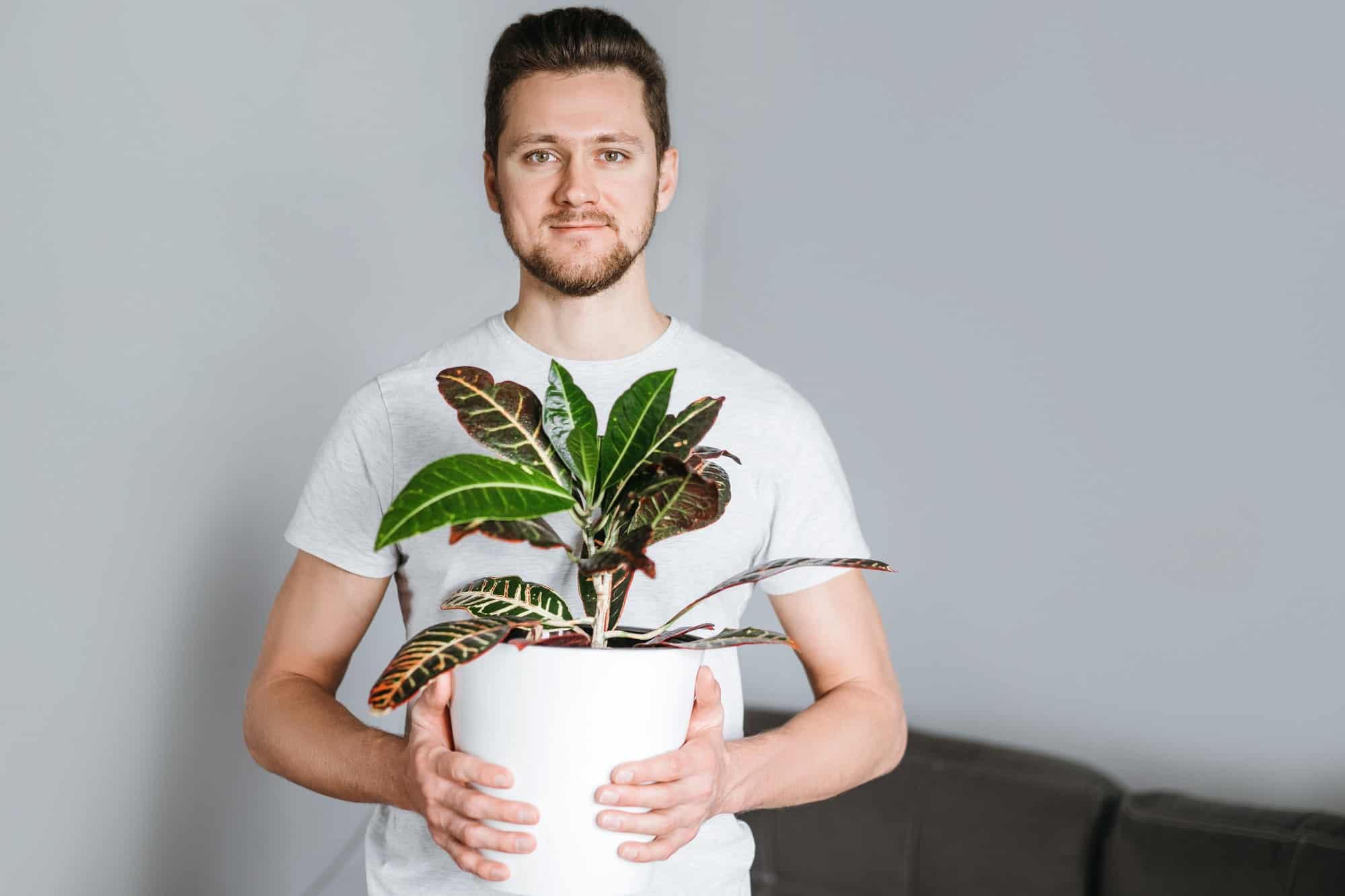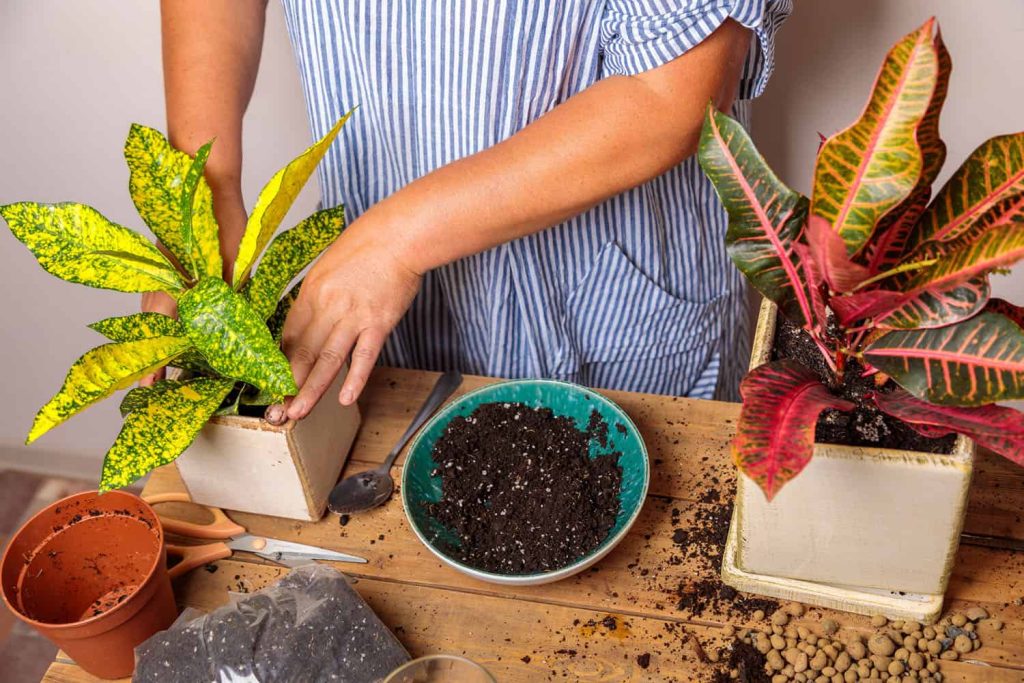Considering the resources some house plants need to survive may dissuade new growers into venturing into propagating them. Is croton plant your favorite house plant and do you need information on what it costs to propagate crotons? Deciding to propagate a croton plant may be overwhelming for new growers.
This is a complete guide to kick-start your croton propagation if you have been concerned about the maintenance requirements of crotons.
Are crotons hard to care for?
Crotons are generally low and easy maintenance plants so no; crotons are not hard to care for. However, this is dependent on providing the specific requirements for a croton’s survival. Adequately providing these requirements makes it easy to grow your crotons.
This is the reason the careful study of a houseplant is one of the major steps to propagating. Crotons grown in high and low humidity regions are grown almost the same way only that some aspects of nurturing them are amplified depending on the environment.
General requirements of croton plants
These are the general requirements of propagating crotons.
1. Low humidity
Being a tropical house plant, crotons grow properly in warm weather conditions. Crotons grown in high humidity environments require more attention. The weather conditions of a high humidity environment are not suitable for croton propagation. Research has it that the ideal humidity range for croton is between 40 percent and 80 percent, with the optimal level being around 70 percent.
To gauge the humidity of your plant, you can use a device called a hygrometer. If you reside in a very dry environment, you are advised to grow your crotons indoors where you can control the humidity to an extent. During winter, move your croton indoors and modify your schedule to reduce watering the plant.
2. Proper location
Finding a location is an essential aspect of propagating a croton plant. this is something that must be considered critically. Crotons do not do well with frequent changes of environments so when this happens, they could experience environmental shocks which most times affects the growth of the plant with a decline process beginning with the leaves falling off. Choose a suitable location and let the plant grow unperturbed.
In addition, choose a location where the plant would receive an adequate amount of light; crotons require about 4 to 5 hours of bright sunlight although this may be dependent on the variety of the croton as some require more or less sunlight than others. If grown indoors, choose a location where it would receive bright light from the sun or make use of fluorescent lamps as another resort.

3. Good drainage soil
Croton plants require soil that drains well. In choosing soil for crotons, choose soils laced with organic compost; this provides the rich soil that crotons require to survive. Soil that gets easily soggy or waterlogged should be avoided. Crotons cannot survive in water-logged soil since the plant can become prone to stem rot.
4. Potting
Potting is another essential requirement for the survival of your plant. Crotons grow beautifully when placed in pots or containers; the pot accentuates the attractiveness of the plant as they help in maintaining the desired shape the grower has chosen for the plant. Ensure the pot provides proper drainage of water for the plant. Make use of drilled holes and containers.
5. Watering
As much as crotons require much water to survive, the soil mixture they thrive in like most house plants is a moist mix. You can ascertain if your soil is requiring more water than usual by sticking your hand into the soil; this identifies how far dry the soil is to gauge how you would water the plant.
In a high humidity region, you would need to mist the leaves more times than usual. If croton soil appears very dry, water the plant until excess flows from the drainage holes in the croton pot or container.
6. Fertilizing
To enhance the growth of your crotons, fertilizers help grow strong stems and leaves and produce nutrients to help the crotons grow bright and colorful leaves. The best fertilizers for crotons are those high in nitrogen.
7. Pruning
Crotons are alluring when they become bushy although as desired by the grower. However, they need to be pruned when overly jammed. When crotons are jammed, they may be deprived of the nutrients they need to survive as most times they compete for the nutrients they receive, stifling the growth of the plant. You are advised to prune to maintain the desired shape of the plant, ensure an even spread of nutrients, and remove unhealthy portions of the plant.
Extra Croton Plant Care Tips
- Water the plant more if the leaf tips turn brown
- Reduce watering if the leaves wilt
- Avoid frequently changing the location of your croton.
- Provide more light if the color starts to fade. On the other hand, if leaves develop gray patches, it is an indication the plant is receiving direct and hot sun and you would need to provide shade for the plant.
- Combat infestations upon detection. Use insecticidal soaps if the infestation is severe
Conclusion
Although crotons require specific requirements that make them differ from other house plants, they can easily be cared for if these requirements are provided from the instance of propagation.
Studying the nature and requirement of your croton prepares you for challenges you may face in the course of propagation and helps avert losses.
Discover Calathea Genus next.
